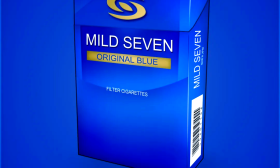The Lingering Smoke: Does Tobacco Permanently Dull the Palate of the Active Cyclist?
For the dedicated cyclist, the pursuit of performance is often matched by a keen appreciation for life's other pleasures, including the complex flavours of a well-earned meal or a post-ride recovery drink. Yet, a significant number of individuals, even within the athletic community, engage in smoking, creating a paradoxical conflict between a health-conscious activity and a notoriously damaging habit. This raises a critical question: for those who cycle regularly, does the act of smoking inflict permanent, irreversible damage on their taste buds, ultimately robbing them of the sensory rewards of their efforts?
To understand the potential for damage, one must first appreciate the delicate biology of taste. Taste buds, those microscopic clusters of cells nestled within the papillae on our tongues, are not static entities. They are dynamic structures with a life cycle of approximately 10 to 14 days, constantly regenerating to replace old or damaged cells. This inherent regenerative capacity is the body's first line of defense against environmental insults, including the hot, toxic cocktail of chemicals present in cigarette smoke.
Smoking assaults the gustatory system through two primary mechanisms: chemical interference and physical degradation. The thousands of chemicals in tobacco smoke, including tar, nicotine, and hydrogen cyanide, directly impair the function of taste receptors. They can alter the composition of saliva, interfere with the transmission of taste signals to the brain, and ultimately dull the perception of flavours, particularly subtle ones. Smokers often report a reduced ability to taste salt and bitterness, leading to a preference for more intensely flavoured, often less healthy, foods.
Concurrently, the heat and particulate matter from smoke cause physical damage. It can scorch the delicate papillae, inflame the tongue's surface, and impede blood flow—a critical component for delivering oxygen and nutrients necessary for cellular repair and regeneration. This combination of chemical and physical assault leads to a well-documented phenomenon: "smoker's palate." This condition is characterized by a flattening and reddening of the tongue's surface, with a visible loss of the healthy, bumpy texture provided by fully formed papillae and taste buds.

This is where the variable of regular cycling enters the equation. Cycling is a potent stimulator of cardiovascular health. It dramatically improves circulation, ensuring efficient delivery of oxygen-rich blood to every part of the body, including the microvasculature of the tongue. Enhanced blood flow supports the rapid turnover and health of all cells, potentially accelerating the repair of taste buds damaged by smoking. Furthermore, the heightened metabolic rate of an athlete could theoretically fuel the energy-intensive process of cellular regeneration more effectively than in a sedentary individual.
The act of cycling also promotes profound hydration. Dehydration is a known factor that can diminish taste acuity by reducing saliva production. A cyclist who diligently hydrates during and after rides maintains a moist oral environment, which helps protect taste buds and may dilute and wash away some of the residual toxins from smoking. Therefore, on paper, the cyclist who smokes might be providing their body with superior tools for repair compared to a non-active smoker.
However, and this is a crucial distinction, these athletic advantages mitigate damage; they do not grant immunity. The regenerative capacity of taste buds, while remarkable, is not infinite. Chronic, long-term exposure to cigarette smoke presents a sustained injury that can eventually overwhelm the body's repair mechanisms. The constant barrage of toxins can cause cumulative damage to the basal cells responsible for generating new taste bud cells. If this stem cell population is compromised, the regenerative process itself becomes impaired.
The question of permanence, therefore, hinges on the duration and intensity of the smoking habit versus the consistency and intensity of cycling. For a light smoker who has engaged in the habit for a short period, the powerful regenerative boost from regular cycling may allow for near-complete recovery of taste function upon quitting. The body, supercharged by excellent cardiovascular health, can effectively clear the damage and restore the gustatory system to its baseline.
Conversely, for a heavy, long-term smoker, the damage may indeed become permanent. Studies have shown that even after quitting, some former smokers never fully regain their original taste sensitivity. This suggests that after a certain threshold of exposure, the damage to the nerve endings or the regenerative stem cell population is irreversible. In this scenario, while cycling would certainly slow the progression of damage and aid overall health, it would be fighting a losing battle against the relentless toxicity of cigarettes. The cycling-enhanced blood flow would be delivering nutrients to a system whose fundamental regenerative blueprint has been altered.
In conclusion, the interaction between smoking and cycling on taste bud health is a tense standoff between destruction and repair. Regular cycling provides a significant physiological advantage, potentially delaying and lessening the damage caused by smoking. It empowers the body's innate healing processes, offering a buffer against the habit's negative effects. Nonetheless, it is not a magic bullet. Smoking is a direct and potent toxin to the gustatory system. While cycling may help manage the symptoms and slow the decline, it cannot entirely prevent the risk of permanent damage from a sustained smoking habit. The only guaranteed way for a cyclist to preserve their full palate and truly savour the fruits of their labour is to extinguish the habit for good, allowing their healthy, active body to do what it does best: heal.











